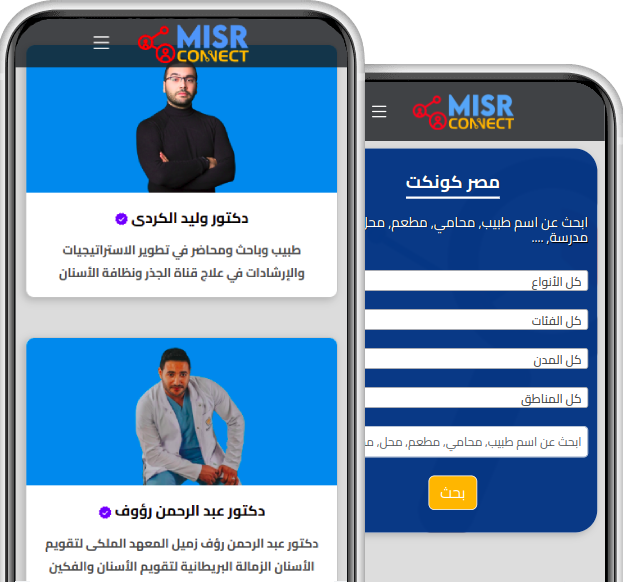Dr. Ahmed Hussein Ahmed Shady
Consultant Pulmonologist

- Name: Dr. Ahmed Hussein Ahmed Shady
- Phone: 0100 169 2143
- Area:
Dr. Ahmed Hussein Ahmed Shady
Consultant Pulmonologist
Specialties and Medical Services:
🫁 Congenital Respiratory Diseases:
Diagnosis and treatment of respiratory conditions present from birth, such as chronic breathing issues in children or adults.
❤️ Cardiopulmonary Diseases:
Diagnosis and treatment of conditions affecting both the heart and lungs, such as pulmonary hypertension, which impacts blood circulation in the lungs.
🫀 Lung Diseases:
Includes infectious diseases like pneumonia, chronic diseases such as pulmonary fibrosis, and pulmonary tuberculosis (TB), among others that affect the lungs.
🛡️ Immunological Lung Diseases:
Diagnosis and treatment of lung tissue inflammation caused by immune system disorders, such as autoimmune lung diseases that damage lung tissue.
🌬️ Chest Allergies:
Treatment of respiratory conditions related to allergies, such as asthma, and respiratory allergies, which include symptoms like shortness of breath, chronic coughing, and chest tightness.
💨 Pulmonary Hypertension:
Diagnosis and management of pulmonary hypertension, a condition that increases blood pressure in the lungs and causes breathing difficulties and fatigue.
🔬 Diagnostic and Therapeutic Bronchoscopy:
Use of bronchoscopy for diagnosis and treatment, including taking lung tissue biopsies or removing foreign objects or mucus obstructing the airways.
📊 Pulmonary Function Tests:
Conducting pulmonary function tests to assess lung performance, such as spirometry to measure lung capacity and respiratory efficiency.
Chest Disease Services:
🌬️ Asthma: Diagnosis and management of chronic respiratory conditions related to allergies.
🩸 Pulmonary Embolism: Diagnosis and treatment of pulmonary blood clots that can lead to breathing difficulties.
🦠 Respiratory Infections: Treatment of upper and lower respiratory tract infections like the common cold, flu, and pneumonia.
🦠 Pulmonary Tuberculosis (TB): Diagnosis and treatment of pulmonary tuberculosis, a long-term infectious lung disease.
🫁 Respiratory Tumors: Diagnosis and treatment of lung tumors, including benign and malignant tumors like lung cancer.
Location:
📍 Suez - Al-Arbaeen District, Ahmed Orabi Street, Al-Jawhara Building
Contact and Appointment Booking:
📞 0100 169 2143
Map Link:
[Link to Map] (Add a map link if available)
Working Hours:
You can call for an appointment or inquire about the available medical services.
FAQ
Pneumonia is an infection in the lungs, and it shows through the following symptoms:
1. Cough: It could have mucus or it might be dry.
2. High fever: Fever with chills (feeling cold with heat).
3. Difficulty breathing: Feeling like you can't take a deep breath.
4. Chest pain: The pain gets worse when you breathe deeply or cough.
5. Fatigue and exhaustion: Feeling extremely tired, unable to get up.
6. Loss of appetite: Not feeling like eating as usual, and sometimes feeling nauseous.
7. Excessive sweating: Especially at night.
8. Muscle aches: Feeling body aches like you have the flu.
9. Mental confusion: Older adults may feel confused or have trouble thinking clearly.
Note: These symptoms can be severe or mild depending on age and health condition.
The recovery time from pneumonia depends on the severity of the condition and the patient's age:
1. Mild cases: Recovery usually takes 1 to 3 weeks.
2. Severe cases or elderly patients: Recovery may take 6 to 8 weeks or longer.
Tips for faster recovery:
1. Get plenty of rest.
2. Stay hydrated by drinking lots of fluids.
3. Follow your doctor’s instructions and take all prescribed medications.
If complications arise or symptoms persist for an extended period, consult your doctor immediately to prevent further health issues.
Pneumonia is an infection that affects the lung tissue itself. This means the air sacs in the lungs become inflamed and may fill with fluid or pus. Its symptoms are clear and include:
1. High fever with chills.
2. Severe coughing, often accompanied by mucus or phlegm.
3. Difficulty breathing, and sometimes chest pain during deep breaths or coughing.
Bronchitis, on the other hand, is an inflammation of the tubes that carry air to the lungs (bronchial tubes). It’s often caused by viral infections or continuous smoking. The main symptoms are:
1. Persistent cough (which may be dry or produce mucus).
2. A feeling of tightness or mild pain in the chest.
3. Wheezing sounds when breathing.
4. General fatigue and exhaustion.
In summary, pneumonia directly impacts the lungs and tends to be more severe, while bronchitis affects the airways leading to the lungs and doesn’t involve the lung tissue itself.
Yes, pneumonia can be contagious, especially if it's caused by bacterial or viral infections. The infection can spread from one person to another through:
1. Coughing and sneezing: From an infected person.
2. Direct contact: Such as shaking hands with someone who is sick.
3. Contaminated air: Inhaling air that contains germs.
To reduce the risk of infection, it’s important to wash your hands frequently, avoid direct contact with sick individuals, and wear a mask if you’re in crowded areas or around infected people.
Symptoms of bronchitis may include:
1. Persistent cough: It can be dry or accompanied by mucus.
2. Difficulty breathing: You might hear wheezing (a whistling sound when breathing).
3. Chest discomfort: A feeling of tightness or heaviness in the chest.
4. Fever: A slight increase in body temperature.
5. General fatigue: Feeling tired and drained most of the time.
6. Nasal congestion or sore throat: A stuffy nose or throat pain might occur.
Note: Bronchitis is often caused by a viral or bacterial infection. The cough may persist even after other symptoms improve.
Bronchitis (acute bronchial inflammation) is usually not dangerous if treated properly. However, in some cases, complications can occur, such as:
1. Chronic bronchitis: If it lasts for a long time or if flare-ups are frequent.
2. Underlying health conditions: Conditions like asthma or heart diseases may increase the risk of complications.
3. Age and weakened immune system: The body may be less able to fight off infections.
4. Rare complications: Such as progression to pneumonia or breathing difficulties.
It is important to consult a doctor when symptoms appear to ensure appropriate treatment and prevent complications.
